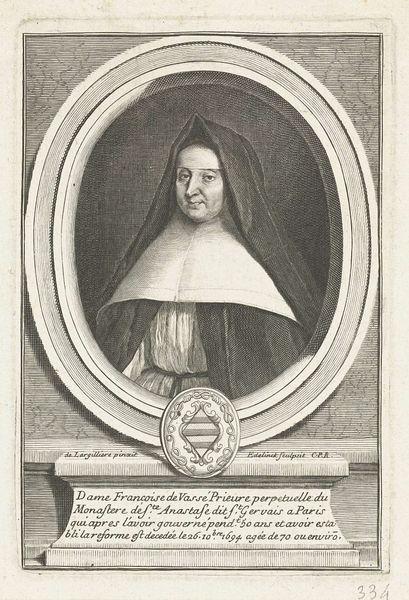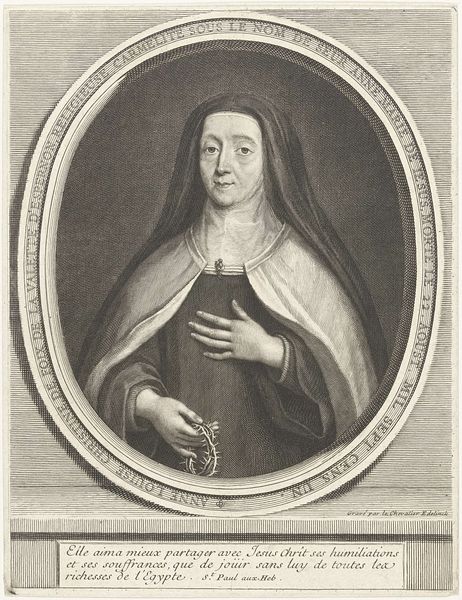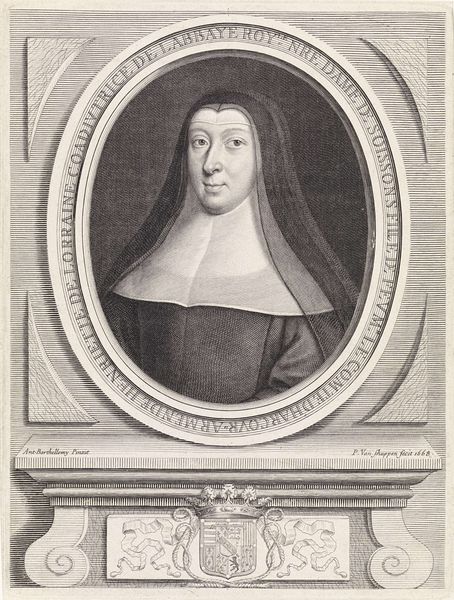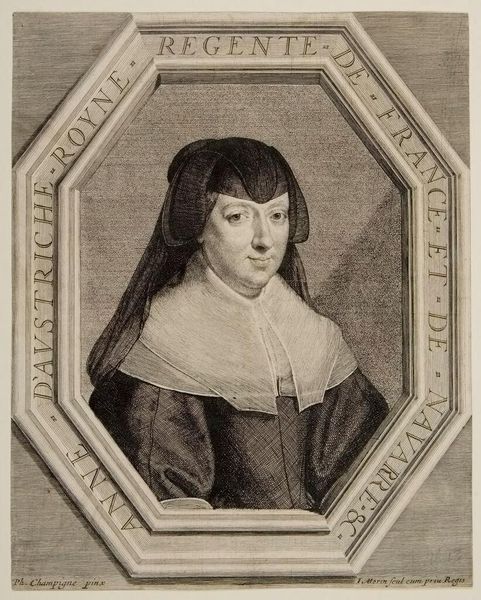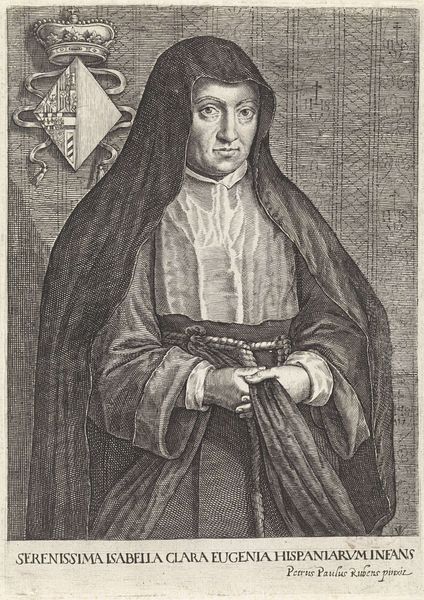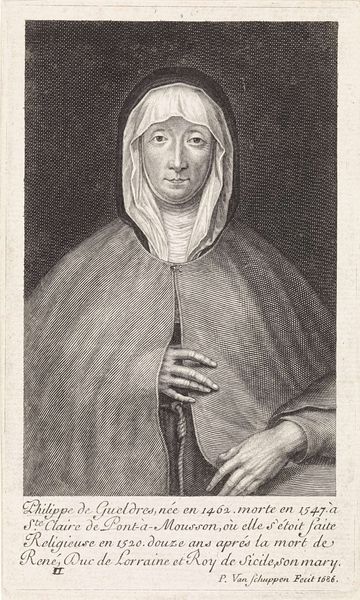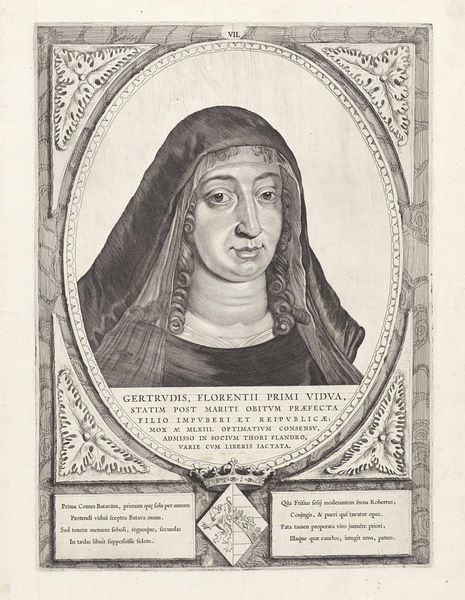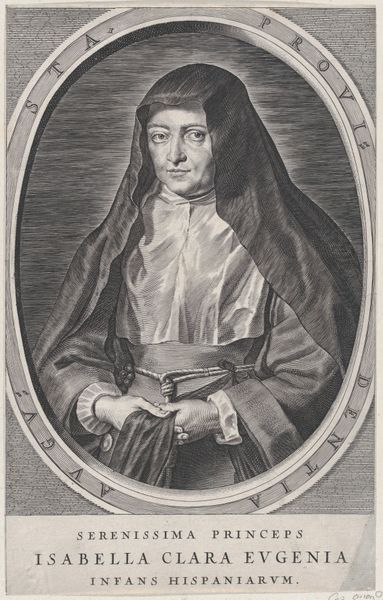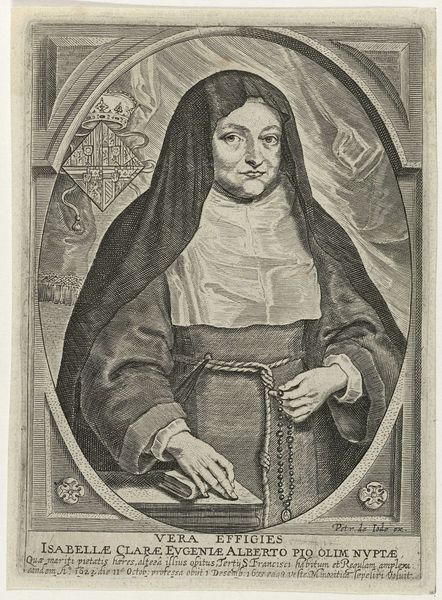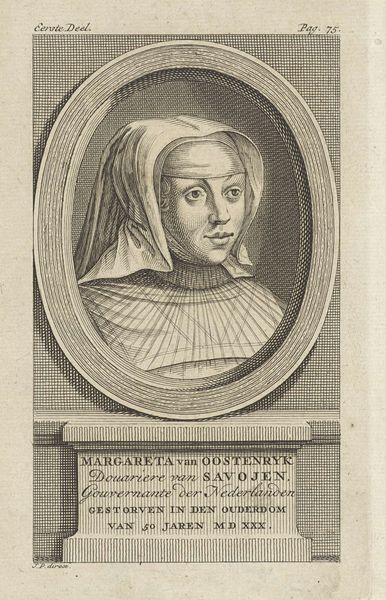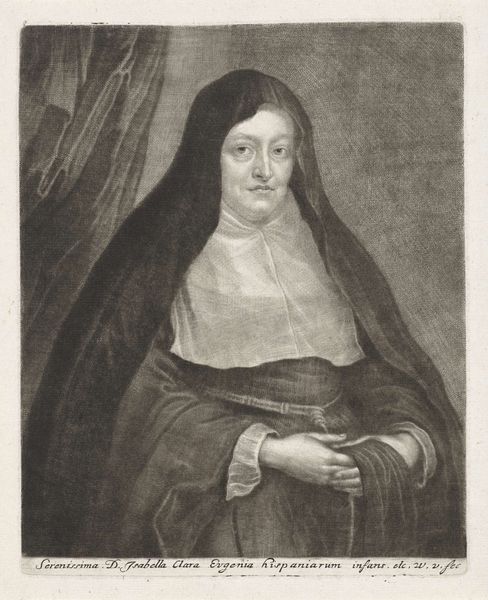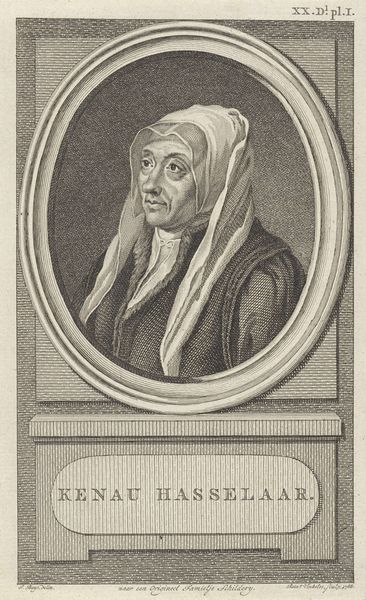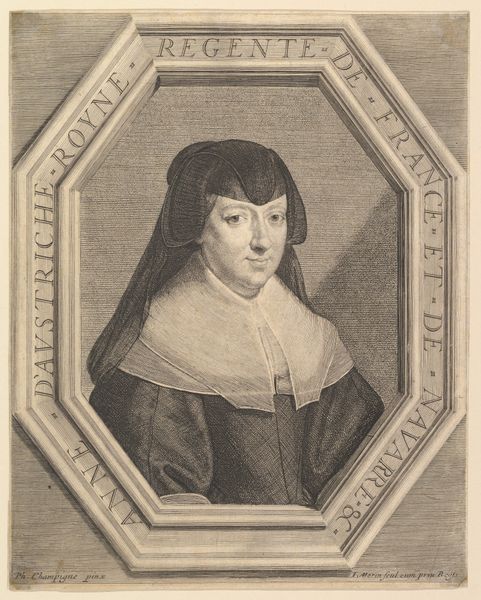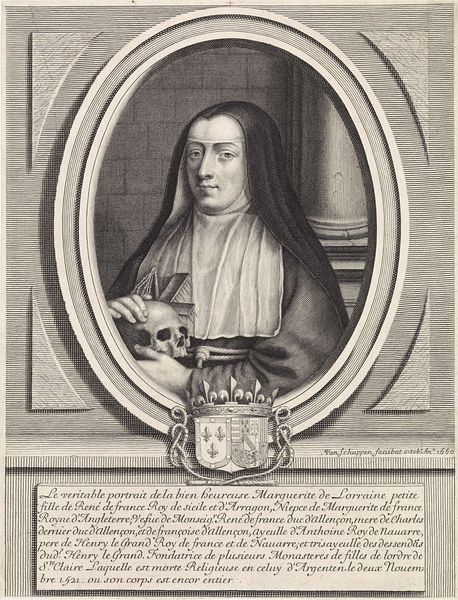
engraving
#
portrait
#
baroque
#
old engraving style
#
portrait reference
#
engraving
Dimensions: height 162 mm, width 101 mm
Copyright: Rijks Museum: Open Domain
Curator: Let's consider this engraving, "Portret van Lady Trevor Warner als non," dating back to 1690, created by Pieter van Schuppen. It’s part of the Rijksmuseum’s collection, an excellent example of Baroque portraiture. Editor: The first thing that grabs me is the skull! Such a powerful symbol in her hands, right? It adds such a…weight to the piece, a stark reminder against the otherwise refined lines of the engraving. Curator: Precisely. The skull speaks to the religious contemplation prevalent in the Baroque era, reflecting mortality and the afterlife. Lady Warner is depicted as Sister Clare of Jesus, her religious name after entering the convent. The print memorializes her devotion and departure from earthly life. Editor: The oval frame enhances this sense of enclosure, almost like looking through a keyhole at a secret, devout life. It almost feels voyeuristic, but not in a sleazy way—more like witnessing something profound. Curator: Indeed. The frame is inscribed with text offering a description and further illuminating her spiritual transition and the perception of her transformation upon entering into a monastic life. These frames were common conventions for portrait engravings that visually declared and situated the status of the subject. Editor: Look how meticulously Van Schuppen rendered the textures, the folds of her habit, her delicate facial features… it’s kind of haunting how life-like she looks rendered as an etching. Do you think most engravings of this type were done after paintings? Curator: Generally, yes. The inscription states Nicolas de Largillière "pinxit," indicating the painting that this print reproduced, thereby broadcasting the portrait to a wider audience than just the patron could manage with painting. Editor: A brilliant way of disseminating the image and a way of capturing something of her essence across time. In some ways it has the same affect as having her death mask on display—or a digital record of our very existence in 2024. Curator: It reminds us that representations hold enduring power. And in this case the print is just as vital to historical memory. Editor: Agreed. A small window into the complexities of faith, legacy, and how we choose to be remembered— or not, I suppose, if you’re the skull.
Comments
No comments
Be the first to comment and join the conversation on the ultimate creative platform.
